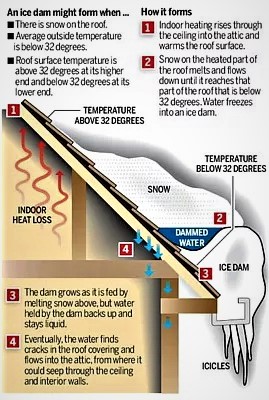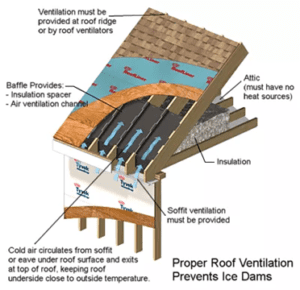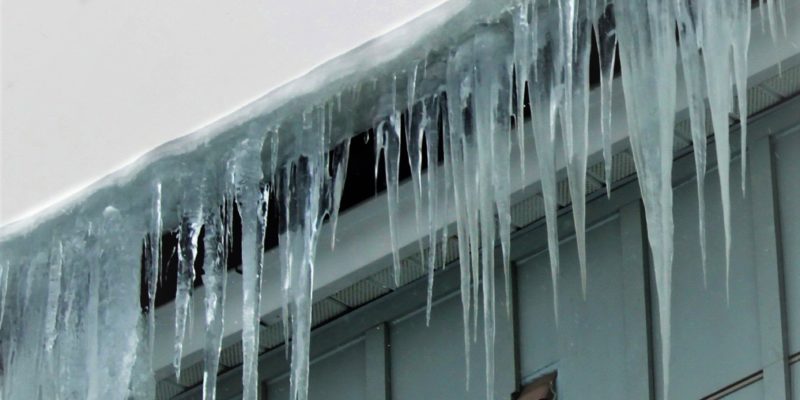Often snow with subsequent freeze-thaw cycles prompt the accumulation of snow and ice at or near gutters. This is most prevalent during sustanined cold periods, as often occurs in the mountains, and periodically at lower elevations. When the ice accumulation is sustained, ice damming can occur. This can give rise to attractive icicles on your eaves, yet there are significant perils to ice dams in your gutters and potential migration of water through your shingles and into the building envelope.
The main cause for ice dams is a “warm roof”, that is a roof over a warm attic, or a rafter roof system without adequate ventilation. The internal heat is sufficient to melt snow that has accumulated on the roof, and the snow melt flows down the roof into and around the gutters, freezing and causing an ice dam. As more snow melts and flows toward the gutter, it becomes trapped behind the ice buildup. The warm interior provides enough heat to keep the water from freezing and the water finds its way under the shingles and eventually below the roof sheathing and may drain down into interior or exterior walls. This can cause structural damage and the potential for mold growth.
Cross section of eaves including attic and gutters

Figure 1 – Owens Corning Diagram
Often snow with subsequent freeze-thaw cycles prompt the accumulation of snow and ice at or near gutters. This is most prevalent during sustanined cold periods, as often occurs in the mountains, and periodically at lower elevations. When the ice accumulation is sustained, ice damming can occur. This can give rise to attractive icicles on your eaves, yet there are significant perils to ice dams in your gutters and potential migration of water through your shingles and into the building envelope.
The main cause for ice dams is a “warm roof”, that is a roof over a warm attic, or a rafter roof system without adequate ventilation. The internal heat is sufficient to melt snow that has accumulated on the roof, and the snow melt flows down the roof into and around the gutters, freezing and causing an ice dam. As more snow melts and flows toward the gutter, it becomes trapped behind the ice buildup. The warm interior provides enough heat to keep the water from freezing and the water finds its way under the shingles and eventually below the roof sheating and may drain down into interior or exterior walls. This can cause structural damage and the potential for mold growth.

Figure 2 – Home-Cost.com 2011
When a roof is replaced, waterproof underlayments can be placed on the roof sheathing at the roof edge to prevent water damage from snow and ice.
Western Engineering is experienced with diagnosing water and ice damming issues, and can assist with mold sampling and identification should water damage be suspected to have caused mold growth.
